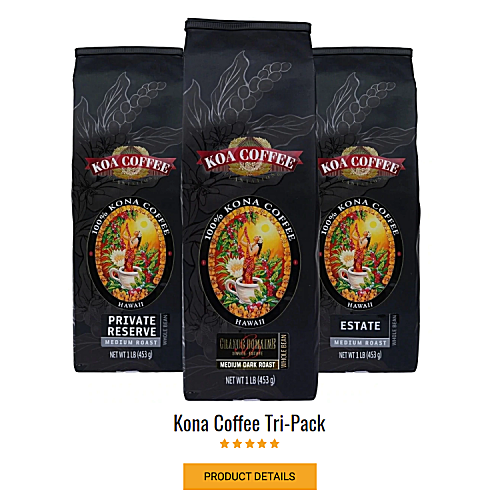In the realm of coffee, the debate between Caffe Misto vs Latte often surfaces among enthusiasts and casual drinkers alike. Both beverages hold a special place in the coffee world, each offering a unique blend of flavors, textures, and experiences. This article delves into a detailed comparison of Caffe Misto and Latte, examining their origins, brewing methods, flavor profiles, caffeine content, nutritional values, and health considerations. By exploring these aspects, we aim to provide a comprehensive understanding of these popular coffee drinks, helping readers make an informed choice suited to their taste preferences and dietary needs. Whether you’re a seasoned coffee aficionado or a curious newbie, this comparison offers valuable insights into the nuanced world of these coffee drinks.
Take a break from reading – hit play and listen to the article below.
- Introduction & Key Differences
- https://app.mysoundwise.com/tracks/17003301414505286e.mp3
- What is Caffe Misto?
- https://app.mysoundwise.com/tracks/17003301718916304e.mp3
- What is a Latte?
- https://app.mysoundwise.com/tracks/17003301984437820e.mp3
- Taste and Flavor Profiles
- https://app.mysoundwise.com/tracks/17003302267727078e.mp3
- Brewing Methods
- https://app.mysoundwise.com/tracks/17003302628448354e.mp3
- Caffeine Content and Strength
- https://app.mysoundwise.com/tracks/17003302940633979e.mp3
- Nutritional Value and Health Considerations
- https://app.mysoundwise.com/tracks/17003303260784697e.mp3
- Conclusion & FAQs
- https://app.mysoundwise.com/tracks/17003303569233186e.mp3
Latte vs Caffe Misto: Key Differences
- Base Ingredient: Caffe Misto is made with brewed coffee, while a Latte is based on espresso.
- Milk Content: Lattes have more milk and a foam layer, leading to a creamier texture, whereas Misto coffee has a balanced mix of coffee and milk without foam.
- Flavor Profile: Misto’s flavor varies with the coffee roast used, offering a diverse taste, while Lattes have a consistent espresso-driven flavor.
- Caffeine Content: The caffeine in Caffe Misto can vary, while in Lattes, it is more consistent, based on the espresso shots.
- Calories and Nutrition: Misto coffee generally has fewer calories than a Latte due to less milk content.
What is Caffe Misto?
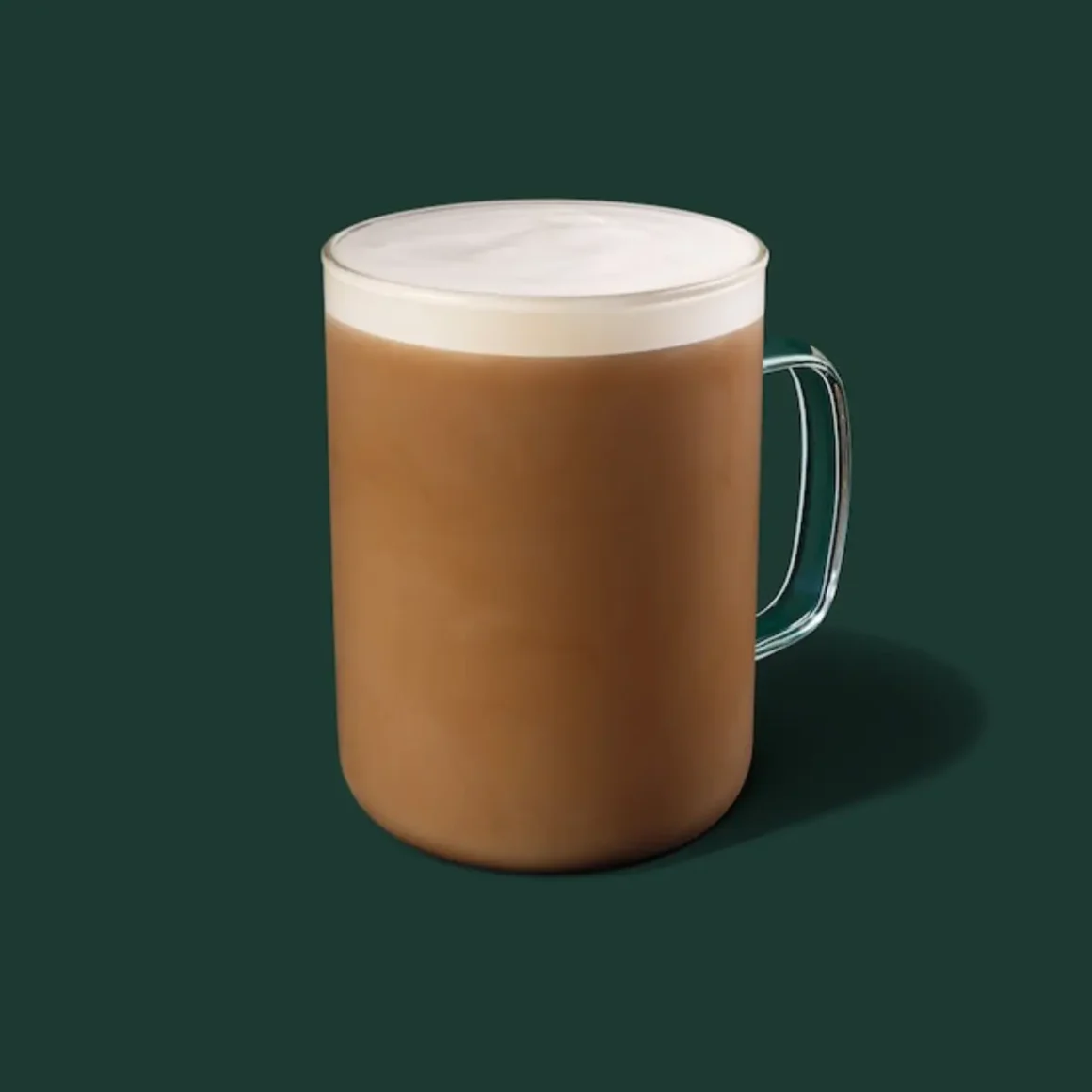
Caffe Misto, a delightful coffee beverage offered by Starbucks, presents a modern twist on the classic cafe au lait. (1) Known for its balanced blend of drip-brewed coffee and steamed milk, this drink provides a unique experience that distinguishes it from other coffee offerings.
- Composition: This coffee beverage is crafted by combining equal parts of drip-brewed coffee and steamed milk. This combination results in a harmonious balance of coffee richness and milky smoothness.
- Frothier Consistency: Unlike the typical cafe au lait, which involves simply heating the milk, Starbucks’ Caffe Misto offers a frothier texture, enhancing the overall taste and experience.
- Historical Evolution: The cafe au lait, with its origin dating back to 17th-century France, symbolizes a timeless coffee tradition. Misto coffee, or café au lait as it’s also known, represents Starbucks’ contemporary version of this historic beverage.
- Global Appeal: This concoction’s heritage, deeply rooted in early French coffee culture, contributes to its worldwide popularity. It symbolizes a simple yet classic coffee choice, often the initial introduction to coffee for many enthusiasts.
- Adaptation and Evolution: Over centuries, the cafe au lait has adapted to changing tastes and cultural influences, making this succulent coffee drink a testament to the enduring legacy of this beloved drink.
The Caffe Misto from Starbucks is more than just a beverage; it’s a blend of tradition, customization, and modern adaptation. Its rich history, combined with the ability to cater to a wide range of preferences, solidifies its position as a globally cherished coffee choice.
What is a Latte?
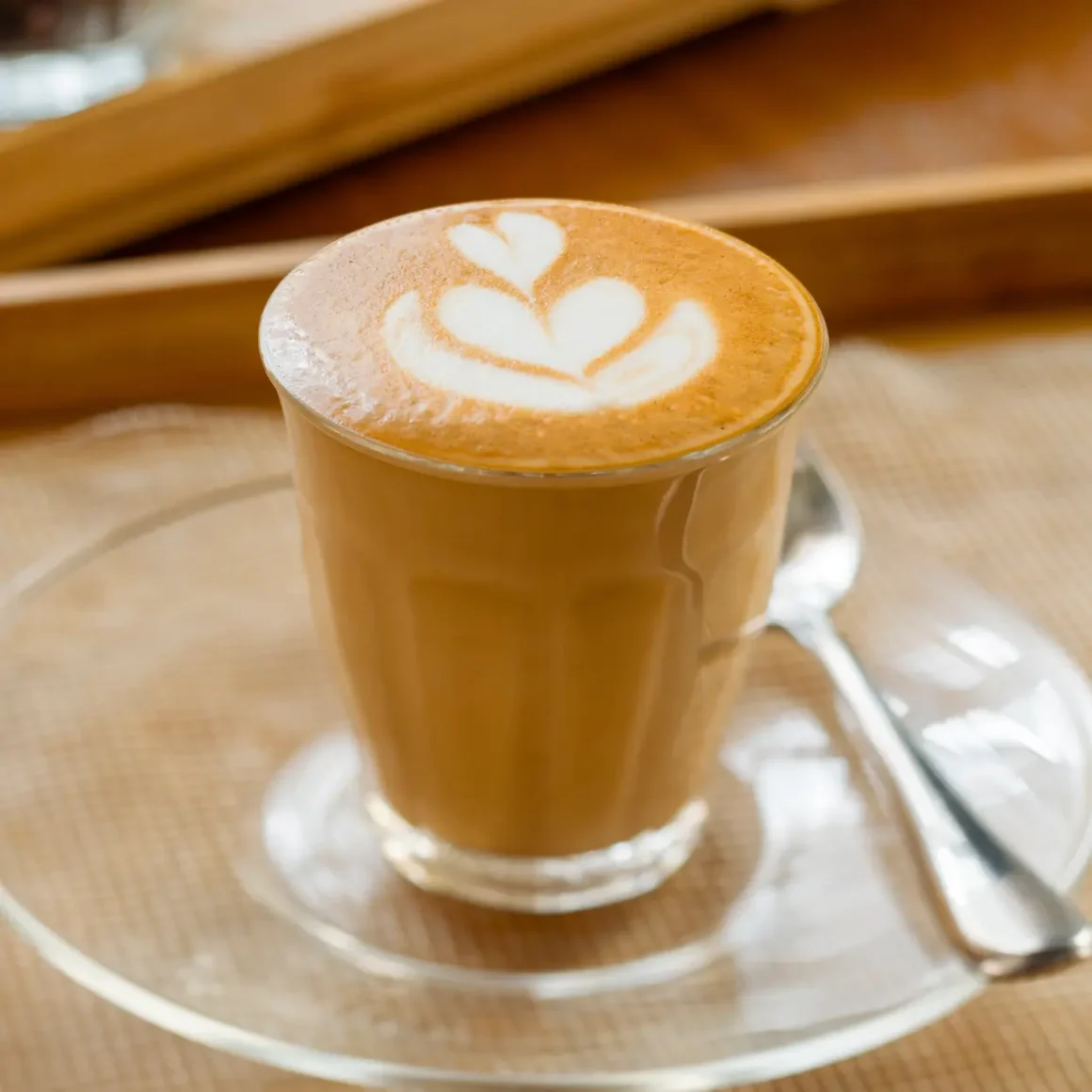
A latte, often referred to in its full Italian name as Cafe Latte, is a popular coffee drink known for its smooth blend of espresso and steamed milk, topped with a light foam layer. (2) Originating from Italy, the latte has become a staple in coffee culture worldwide, celebrated for its rich texture and versatility.
- Basic Composition: A standard latte consists of espresso mixed with milk and finished with a layer of milk foam. This composition creates a creamy and smooth beverage, less intense in flavor compared to a straight espresso.
- Milk Foam and Art: One of the distinguishing features of a latte is its thin layer of milk foam, which not only adds a velvety texture but also serves as a canvas for latte art, a creative expression by baristas.
- European Origins: The latte, as we know it today, has its roots in European traditions of combining coffee and milk, dating back to the 17th century.
- Global Evolution: While terms like “Milchkaffee” and “café au lait” were used in Europe, the latte gained commercial popularity in the United States in the 20th century, especially in the 1950s in California and later in Seattle during the 1980s.
- Global Terms: The latte is synonymous with various regional names like café au lait in France, cafè amb llet in Catalonia, and galão in Portugal.
In essence, a latte represents the perfect marriage of espresso and milk, resulting in a beloved beverage enjoyed across the globe. Its rich history and adaptability to various flavors and preparations have made it a cornerstone of modern coffee culture, offering a delightful experience to coffee lovers everywhere.
Caffe Misto vs Latte: Taste and Flavor Profiles
The world of coffee is rich with diverse flavors and taste profiles, each offering a unique experience. Two popular choices, Caffè Misto and Latte, stand out with their distinct taste and customizable options, catering to a wide range of palates.
Caffe Misto’s Flavor Profile

Caffè Misto, characterized by its harmonious blend of brewed coffee and steamed milk, showcases a flavor profile greatly influenced by the choice of coffee bean roast.
- Roast Influence:
The type of roast selected plays a pivotal role in defining the Misto’s taste.
- Medium or dark roasts provide a richer and more profound flavor, often leading to a stronger and earthier coffee experience.
- For example, a Sumatra coffee roast can lend a bold and earthy nuance to the drink.
- Enhancement with Flavor Shots: The addition of flavor shots like hazelnut or vanilla can transform this concoction into a smoother and creamier beverage, adding layers to its taste profile.
This delicacy offers a unique blend where the natural flavors of the coffee are enhanced, not overshadowed, making it a delightful choice for coffee aficionados.
Latte’s Flavor Profile
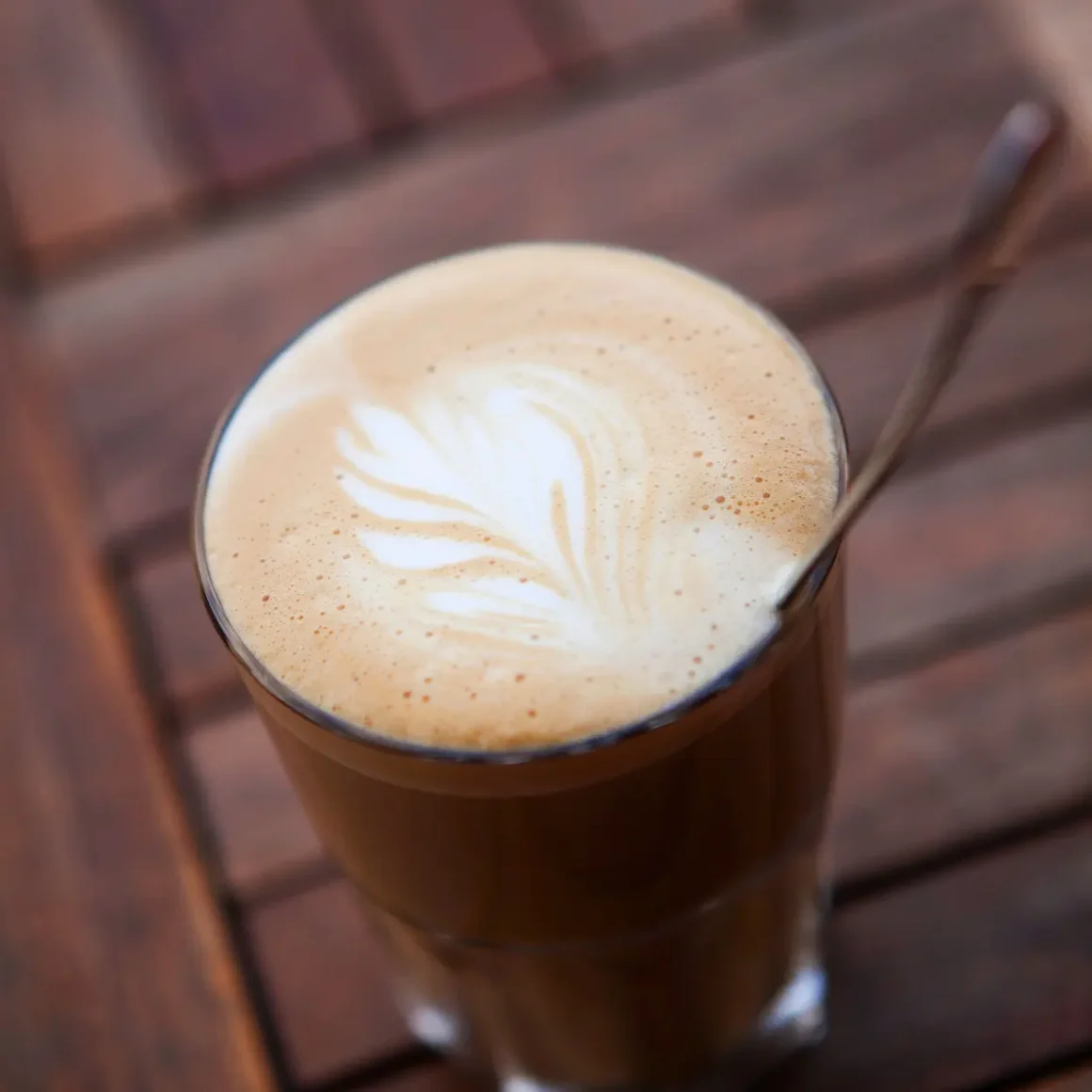
A Latte, or cafe latte, is a delightful concoction that begins with a base of espresso and is complemented by steamed milk and a delicate layer of foam. This combination yields a rich and balanced coffee drink.
- The base of Espresso: The espresso foundation contributes a deep and concentrated flavor, which, when mixed with milk, results in a more mellow and rounded taste.
- Sweetness and Flavor Shots: Lattes often have a mild sweetness to them, and the inclusion of flavor shots such as vanilla, caramel, or hazelnut can add an additional taste dimension.
- Milk to Espresso Ratio: The balance of espresso with milk in a latte ensures that the intensity of the espresso is softened, giving way to a creamy finish and silky mouthfeel.
The latte is celebrated for its rich, velvety texture and the harmonious interplay of espresso and milk, making it a beloved choice among coffee lovers.
Customization Options
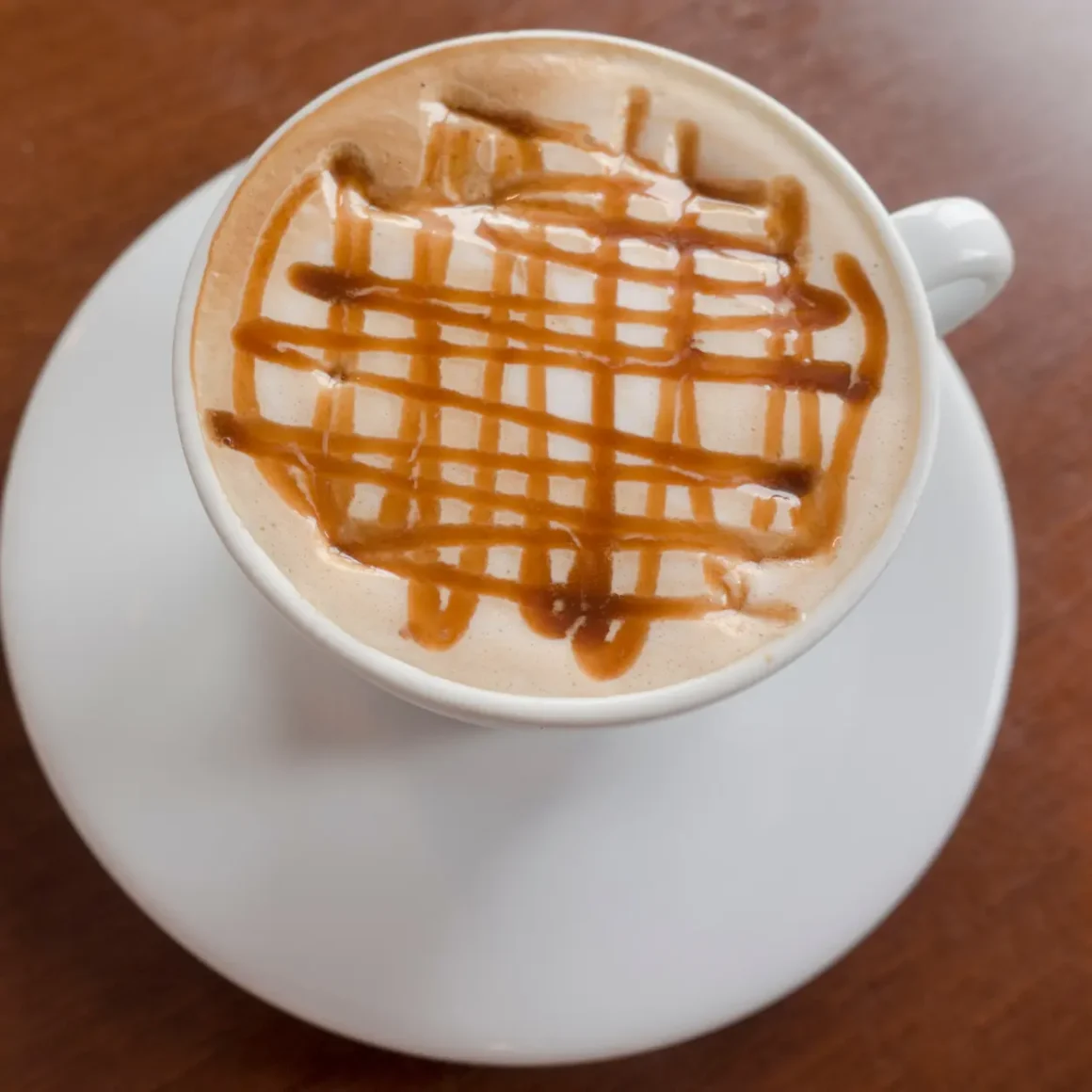
This coffee drink offers various customization options to suit individual preferences.
- Roast Selection: Adjusting the roast level of the coffee beans can alter the flavor intensity, from bold and robust with a darker roast to smooth and delicate with a lighter roast.
- Flavored Syrups: Incorporating coffee syrups like caramel, vanilla, or hazelnut can enhance the beverage’s taste.
- Non-Dairy Alternatives: Substituting cow’s milk with non-dairy options such as almond, soy, or oat milk caters to different dietary needs.
- Temperature Adjustments: Opting for cold milk instead of steamed can offer a refreshing twist to the traditional Caffè Misto.
Coffee customization plays a significant role in the latte experience as well.
- Flavor Variations: Adding different flavored syrups, from classic vanilla to seasonal pumpkin spice, allows for a personalized taste.
- Milk Options: Experimenting with non-dairy milk alternatives can influence the texture and creaminess of the latte.
- Temperature Styles: Choices range from iced lattes, using cold milk and ice, to warmer versions with less froth.
- Latte Art: The inclusion of latte art, such as hearts or rosettes, adds a visual charm to the drink.
To sum up, both of these delectable beverages offer a spectrum of customization options, from coffee roasts and flavor enhancements to milk varieties and temperature adjustments. This versatility allows coffee enthusiasts to tailor their drink to perfectly match their taste preferences, making each cup a unique and personal experience.
Latte and Caffe Misto: Brewing Methods
Exploring different brewing methods for coffee can significantly influence the taste and quality of your coffee experience. Each method, from espresso-based to drip brewing and the French press, offers unique characteristics and results, particularly in preparing popular drinks like Caffe Misto and Lattes.
Espresso-Based Brewing
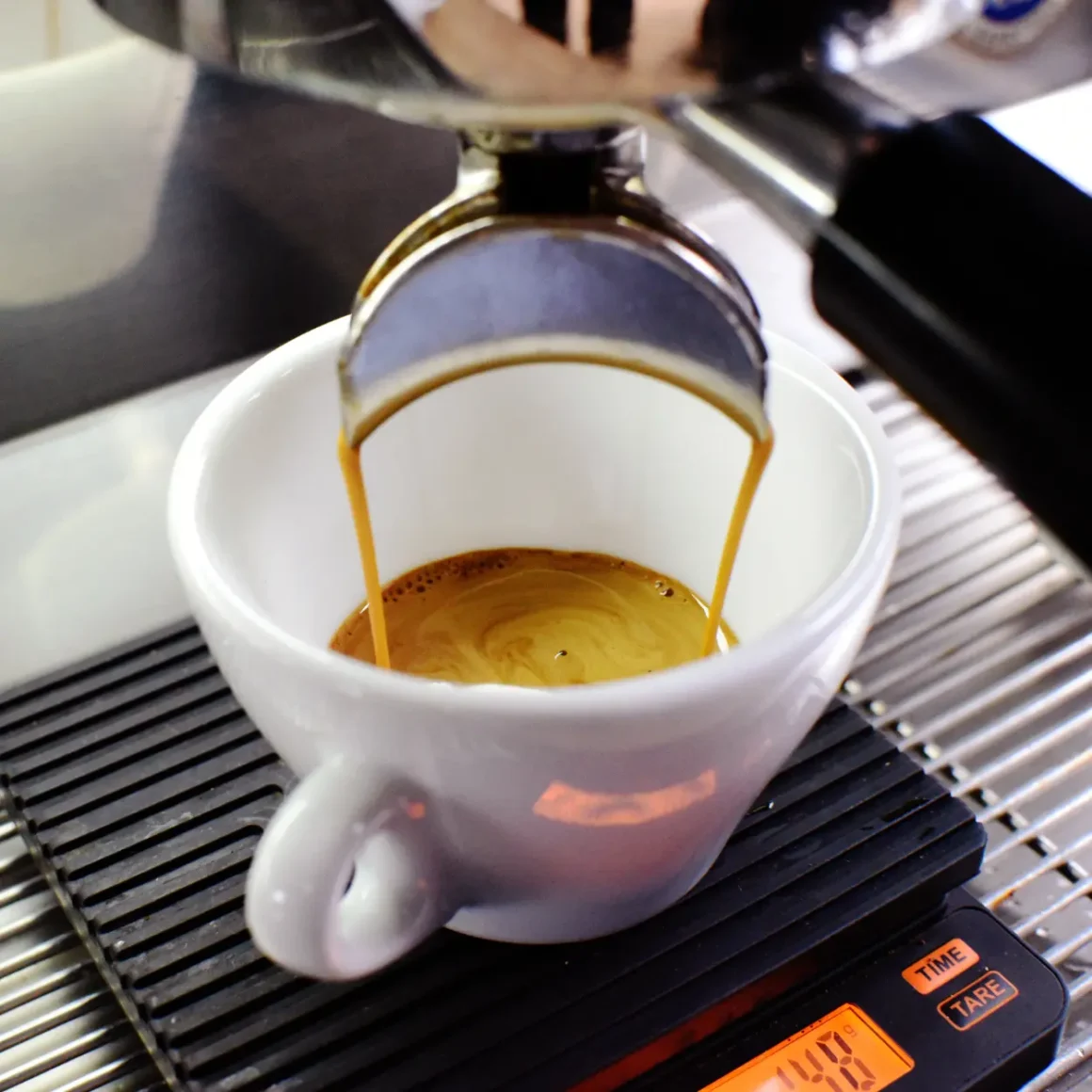
Espresso-based brewing is a method that extracts concentrated coffee by forcing hot water through finely ground coffee beans. (3) This technique is crucial in preparing many coffeehouse favorites.
- Espresso as the Base: Espresso serves as the foundation for numerous coffee drinks. Its intense flavor and concentrated form make it ideal for combining with other ingredients, particularly milk.
- Steaming Milk: Steamed milk is a key component in espresso-based drinks. The process involves heating milk to create a rich, creamy texture, which softens the intensity of the espresso.
- Preparing a Latte: To prepare a Latte, Begin by gathering your equipment, including an espresso machine, portafilter, milk, and a latte glass. Pull a shot of espresso with precision and consistency, then steam your milk to around 150°F (65-70°C) to create silky microfoam. Carefully pour the espresso into your glass, followed by the steamed milk in a one-third espresso to two-thirds milk ratio.
Espresso-based brewing is revered for its ability to produce robust and flavorful coffee drinks, perfect for those who enjoy a strong coffee taste balanced with the creaminess of milk.
Drip Brewing
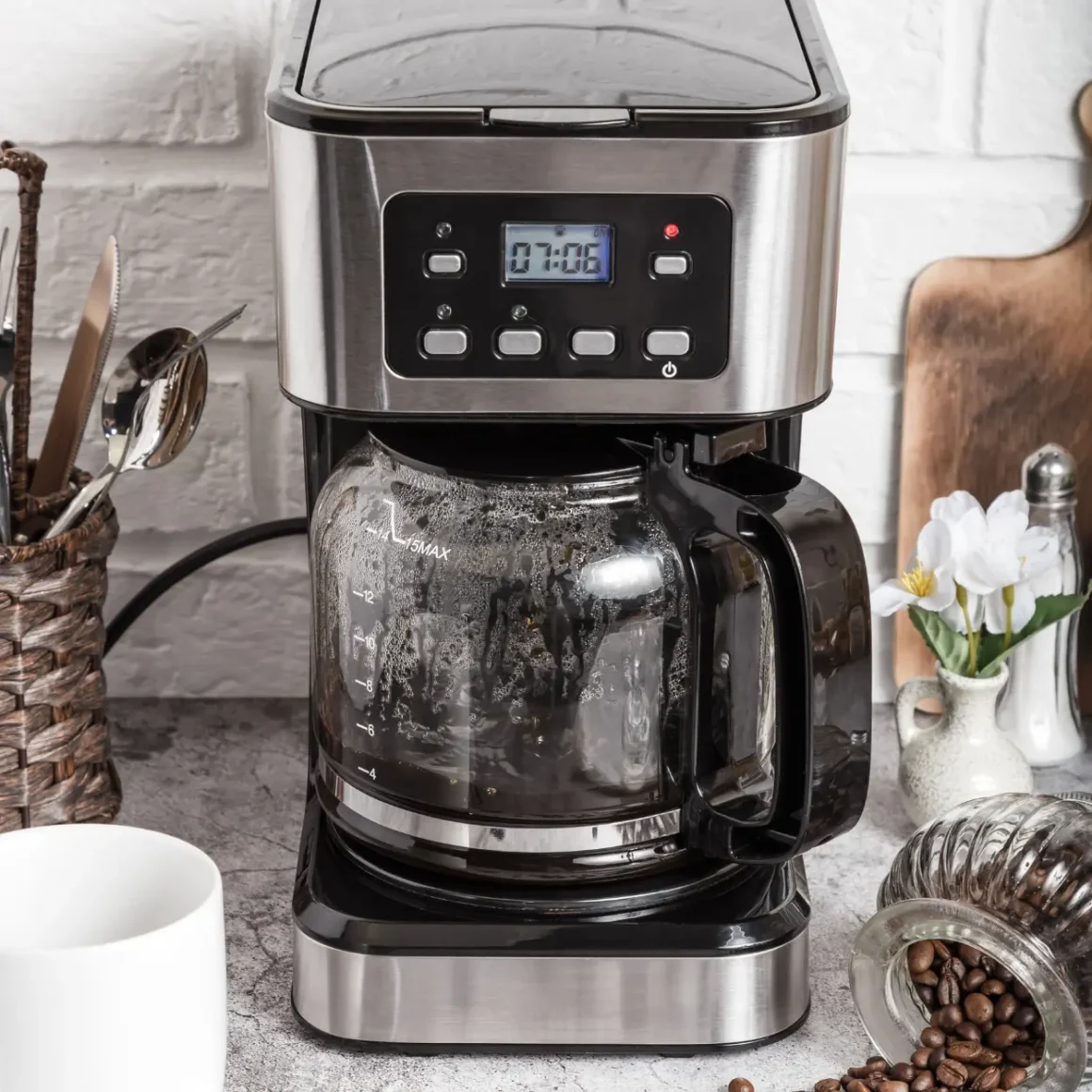
Drip brewing is a popular and accessible method for making coffee, involving the slow dripping of hot water over ground coffee beans.
- Drip Coffee for Caffe Misto: For this concoction, drip coffee can provide a robust base. The coffee should be strong, as it will be diluted with milk.
- Drip Coffee for Latte: While less common, drip coffee can also be used in a Latte, especially when an espresso machine is not available. The key is to ensure the coffee is strong enough to not be overpowered by the milk.
- Preparing Caffe Misto: To prepare a Caffe Misto using drip coffee, start by brewing a fresh pot of drip coffee with high-quality beans. While the coffee brews, heat milk to your preferred temperature using a milk frother or other methods. Pour the brewed coffee into a mug, filling it about halfway, and then carefully add the heated milk, adjusting the ratio to your taste. Give it a gentle stir and customize it with sweeteners or spices if desired.
This type of brewing is a versatile method that suits various coffee preferences and is especially useful in home settings, where espresso machines might not be readily available.
French Press Method
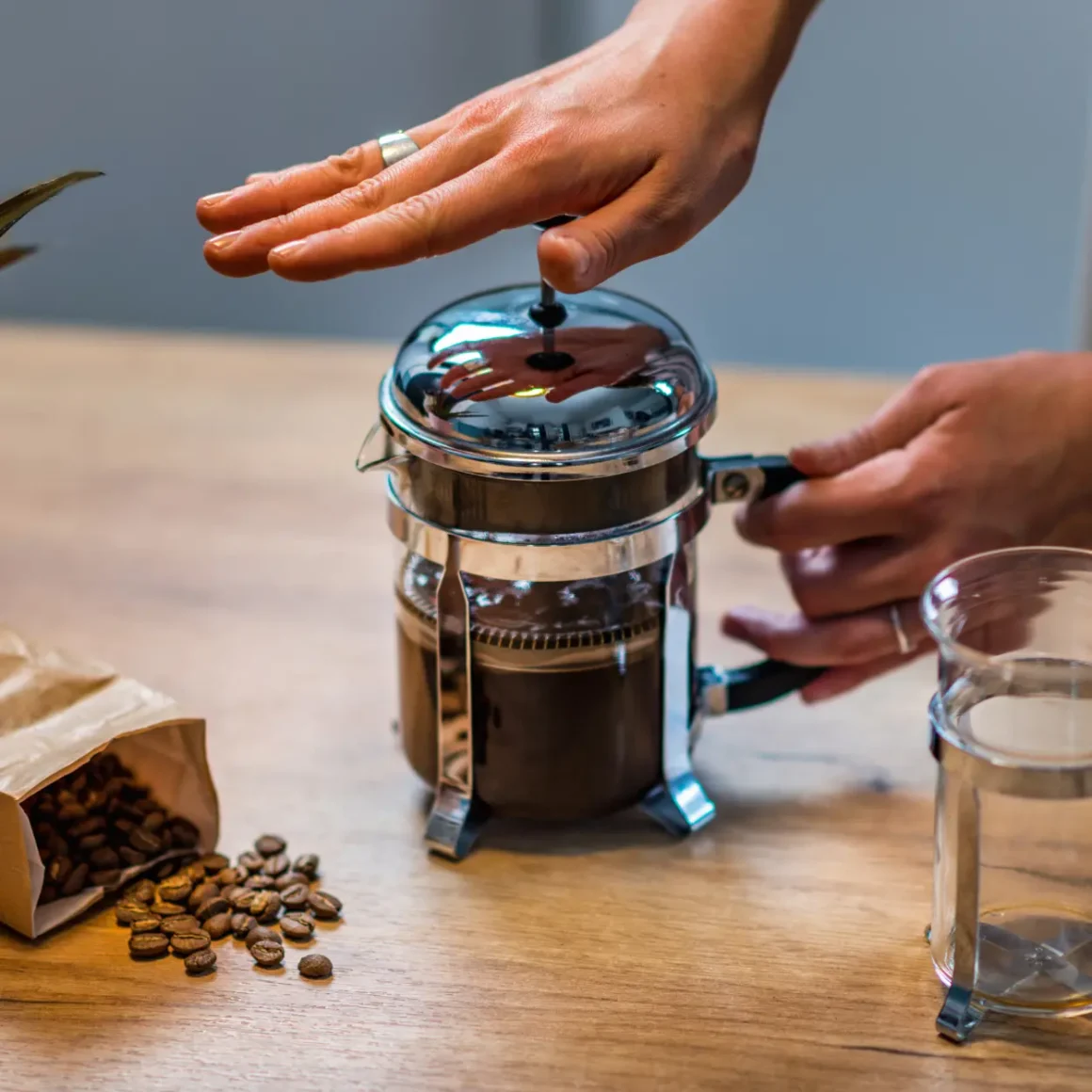
The French press is a beloved brewing method for its simplicity and the rich, full-bodied coffee it produces.
- Using French Press for Caffe Misto: For a French Press Caffe Misto, start with coarsely ground coffee, perform a blooming step, and then steep the coffee with hot water. Press down the plunger and serve.
- Using French Press for Cafe Latte: For a French Press Latte, brew strong coffee in the French Press and simultaneously steam milk. Combine the brewed coffee with steamed milk, adjust the ratio to taste, and customize as desired.
- Flavor Extraction: The immersion brewing in a French press ensures a thorough extraction of coffee flavors, resulting in a bold and robust taste.
- Comparing French Press Results: Compared to other methods, the French press coffee maker offers a more intense and rich coffee flavor, making it a great choice for those who enjoy a hearty and deep coffee taste.
The French press method is ideal for coffee enthusiasts who appreciate a more robust and full-flavored coffee base for their milk-based beverages. Its ease of use and the ability to control the strength of the brew makes it a popular choice for home brewing.
Caffeine Content and Strength
Understanding the caffeine content in coffee drinks like Caffe Misto and Lattes is crucial for coffee enthusiasts who monitor their caffeine intake or seek a particular energy boost. The caffeine levels in these beverages vary based on several factors, including the type of coffee beans used and the brewing method.
Caffe Misto Caffeine Levels
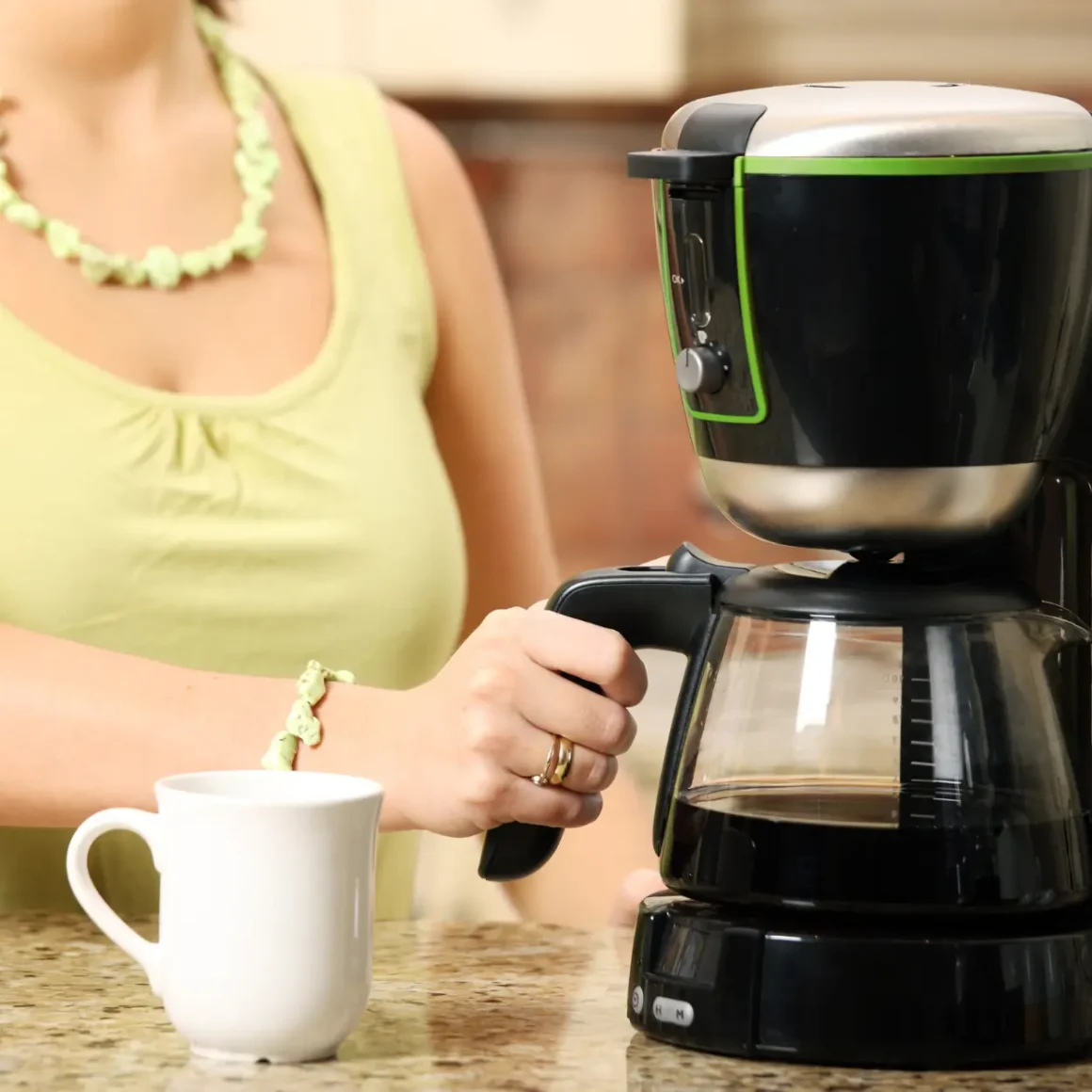
The caffeine content in a Caffe Misto can differ significantly depending on specific factors.
- Influence of Coffee Bean Type: The type of beans used in brewing the coffee plays a critical role in determining the caffeine levels. Lighter roasts are known to contain more caffeine compared to their darker roasted counterparts.
- Brewing Method Impact: The method of brewing also affects the caffeine concentration. Drip brewing tends to yield a higher caffeine content than other methods like the French press or pour-over.
- General Caffeine Estimates: Based on general estimates, a 12-ounce serving of this Misto coffee contains about 115 mg of caffeine. This level may vary depending on the factors mentioned above.
The caffeine content in Caffe Misto is influenced by both the choice of coffee beans and the brewing technique, offering a versatile range of strengths to suit different preferences.
Latte Caffeine Levels
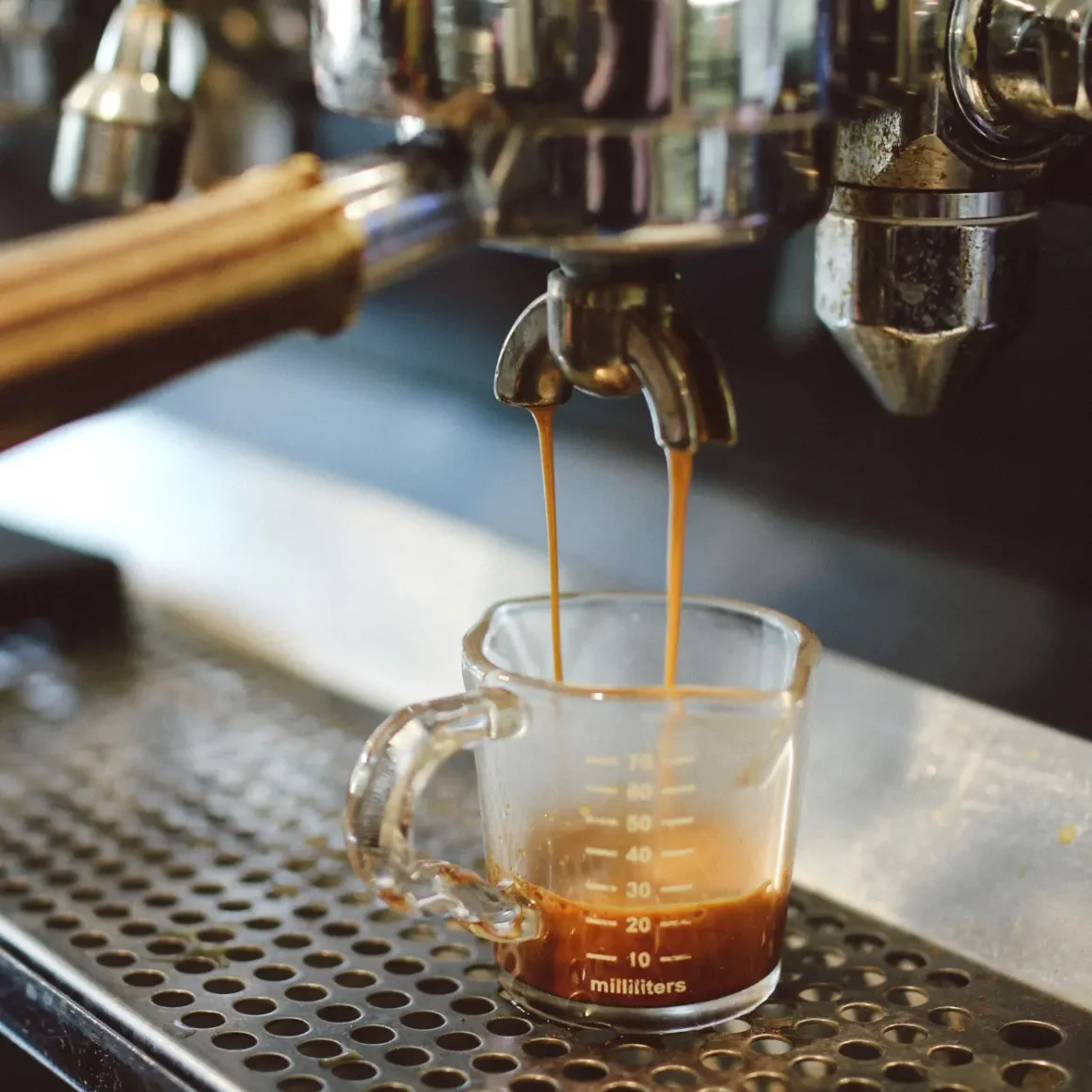
Lattes, with espresso as their base, exhibit a different caffeine profile compared to Misto coffee.
- Espresso Shots as the Base: The number of espresso shots in a latte determines its caffeine content. Typically, a single shot of espresso is used in standard lattes.
- Consistency in Caffeine: Espresso provides a more consistent level of caffeine compared to regular brewed coffee. A 12-ounce latte generally contains around 125 mg of caffeine.
- Caffeine in Larger Servings: For larger servings, such as a 16-ounce latte, the caffeine content can go up to 154 mg, depending on the number of espresso shots added.
Lattes offer a more predictable caffeine content, with the amount of caffeine primarily based on the number of espresso shots included in the drink.
Which One Packs a Stronger Punch?

When assessing which beverage packs a stronger caffeine punch, several factors need to be considered.
- Caffeine in Caffe Misto: Misto coffee can have varying levels of caffeine based on the coffee beans and brewing method. In some cases, it can have a higher caffeine content than a latte.
- Caffeine in Lattes: Lattes, on the other hand, provide a consistent caffeine experience due to the standardized espresso shots.
- Size Matters: For a regular 12-ounce serving, a Latte coffee generally contains more caffeine than a Caffe Misto. However, for larger sizes like 16 ounces, both drinks can have similar caffeine levels of around 150 mg.
The caffeine strength in a latte vs caffe misto depends on various factors including the serving size, the type of coffee beans used in the Misto, and the number of espresso shots in the latte. Understanding these variables can help coffee lovers choose the right drink based on their caffeine preference and sensitivity.
Nutritional Value and Health Considerations
When it comes to coffee beverages like Caffe Misto and Latte, understanding their nutritional value and health implications is essential for health-conscious individuals. Both drinks contain varying levels of calories, nutrients, and other health considerations, influenced by their ingredients and preparation methods.
Calories and Nutrients in Caffe Misto
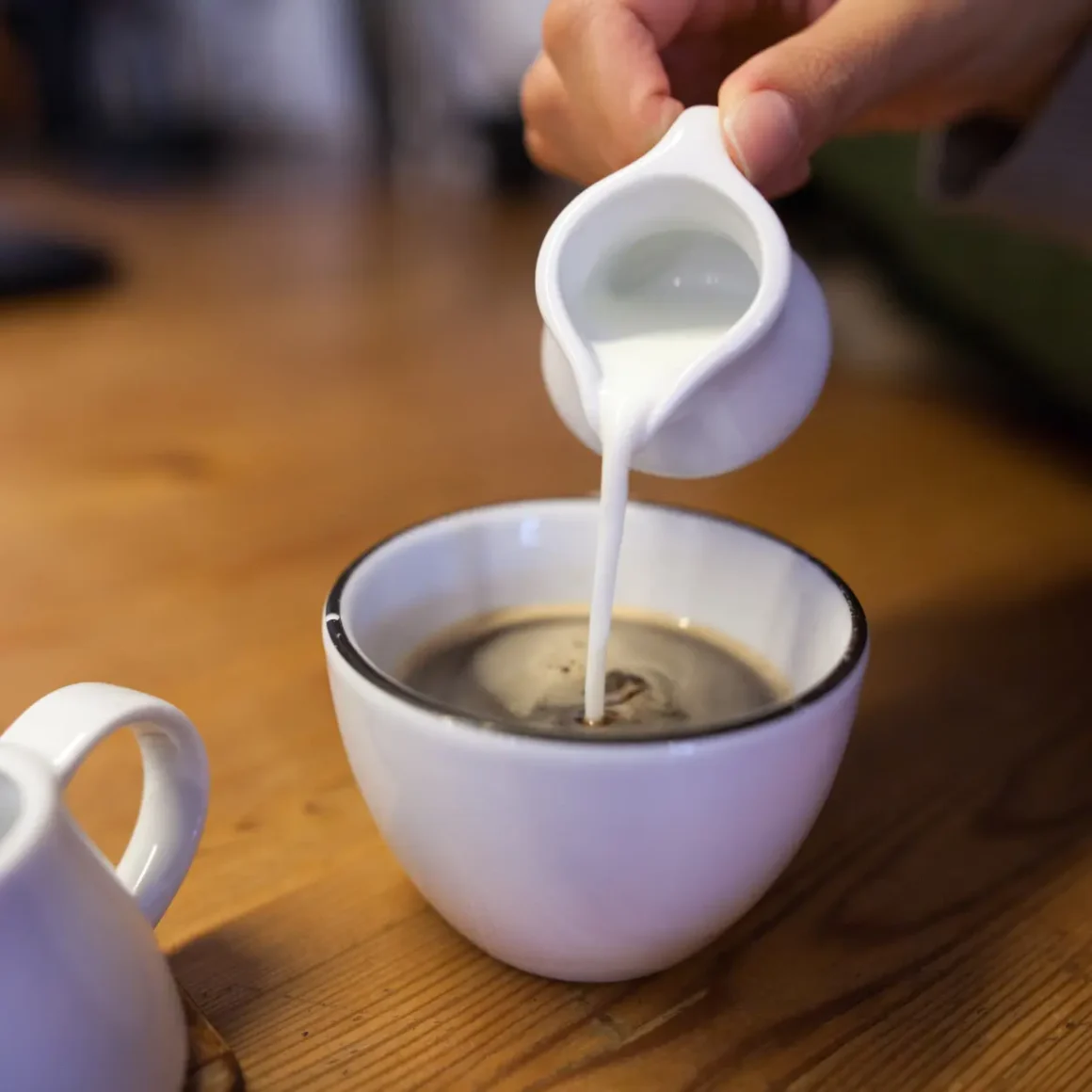
This coffee beverage combines brewed coffee with steamed milk, resulting in a distinctive nutritional content.
- Caloric Content: A standard 16-ounce Caffe Misto contains approximately 110 calories. This is relatively lower compared to other creamy coffee drinks.
- Cholesterol and Fat: It includes about 15 mg of cholesterol. (4) The fat content largely depends on the type of milk used, with whole milk contributing to higher fat and calorie counts.
- Protein and Carbohydrates: The protein and carbohydrate content in this coffee drink also varies with the choice of milk, contributing to its overall nutritional value.
Misto coffee offers a moderately low-calorie option for those who enjoy a balance of coffee and milk without excessive calories.
Calories and Nutrients in Latte

A Latte primarily consists of espresso and a larger quantity of steamed milk, influencing its nutritional profile.
- Caloric Measurement: For a 16-ounce serving, a Latte contains around 190 calories, which is higher than that of a Caffe Misto.
- Cholesterol and Dietary Fats: The cholesterol level in a Latte is about 20 mg, and like the Caffe Misto, the fat content varies depending on the milk choice.
- Protein and Carbs: Lattes generally have a higher protein and carbohydrate count due to the increased volume of milk, which can be beneficial for energy and nutrition.
Lattes, with their higher milk content, are a more calorie-dense option, ideal for those seeking a richer and more filling coffee drink.
Which is Healthier?
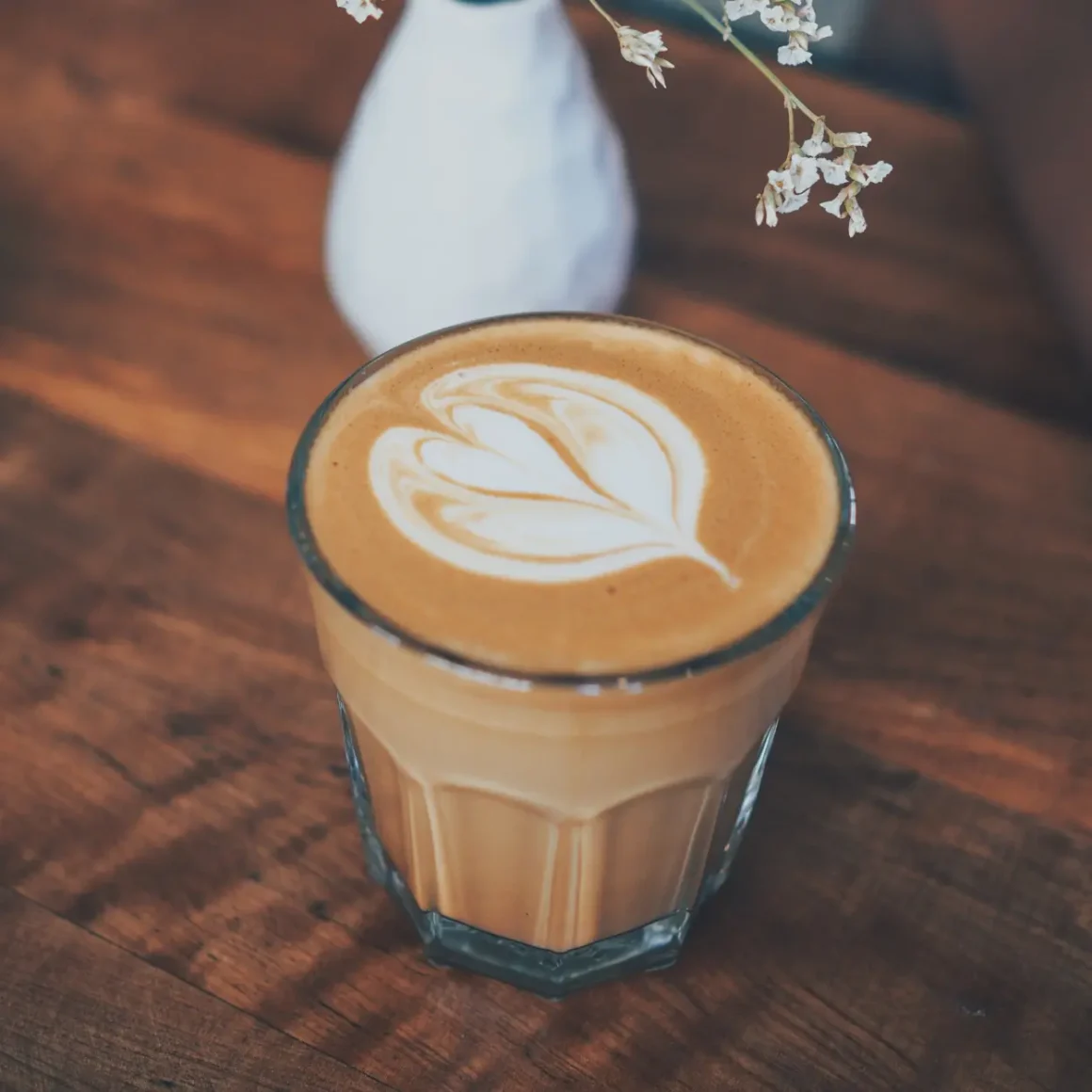
Determining which drink is healthier depends on individual dietary needs and preferences.
- Lower Calorie Option: The Caffe Misto is a lower-calorie choice, making it suitable for those on calorie-restricted diets.
- Nutrient Considerations: For individuals looking for higher protein and carbohydrate intake, a Latte might be the better option.
- Milk Type and Dietary Restrictions: The type of milk used in both drinks significantly affects their cholesterol, fat, and overall caloric content. Options like skim milk or plant-based alternatives can offer healthier versions of both drinks.
Both Caffe Misto and Latte have their unique nutritional profiles and health implications. The Misto coffee stands out as a lower-calorie option, while the Latte offers more in terms of protein and carbohydrates. Ultimately, the choice between the two depends on personal health goals, dietary restrictions, and taste preferences.
Conclusion
In conclusion, the comparison between Caffe Misto vs Latte reveals a fascinating glimpse into the diverse world of coffee. Each drink, with its unique preparation methods, flavor nuances, and nutritional profiles, caters to different preferences and occasions. While Misto coffee offers a balanced fusion of brewed coffee and steamed milk, ideal for those who appreciate a milder flavor with lower calorie content, the Latte stands out with its rich espresso base and creamy texture, perfect for those desiring a more robust and filling beverage. Understanding the differences in caffeine content, brewing techniques, and health implications further enriches our appreciation of these beloved coffee staples. Ultimately, whether you choose a Caffe Misto or a Latte, each sip promises a delightful journey through the art and science of coffee.
FAQ
What's the calorie difference between Caffe Misto and Latte?
A Caffe Misto typically has fewer calories than a Latte, primarily due to its lower milk content.
Can I customize the flavor of my Latte?
Yes, you can customize the flavor of your Latte with various syrups and milk alternatives.
Which one has more caffeine: Caffe Misto or Latte?
The caffeine content varies, but generally, a Caffe Misto can have more caffeine than a Latte, depending on the coffee beans and brewing method.
Is it better to choose Caffe Misto for a healthier option?
Yes, choosing Misto coffee can be a healthier option due to its lower calorie content compared to a Latte.


